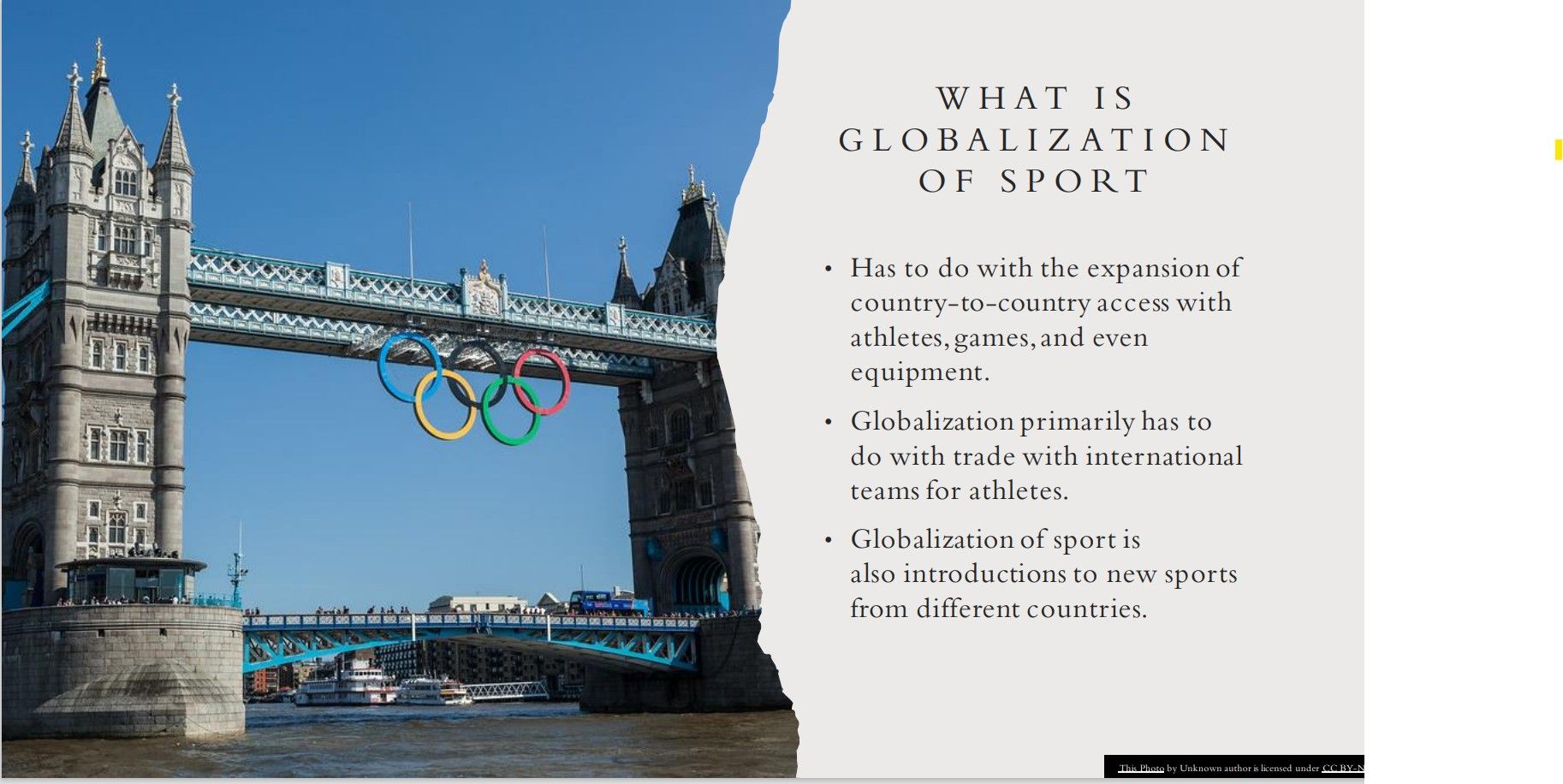Globalization of Sport

W H A T I S G L O B A L I Z A T I O N O F S P O R T?
- Has to do with the expansion of
country-to-country access with
athletes, games, and even
equipment. - Globalization primarily has to do with trade with international teams for athletes.
- Globalization of sport is also introductions to new sports from different countries.

T H E P RO C E S S O F G L O B A L I Z A T I O N I N S P O RT
• Different dimensions of globalization, particularly the political, economic and cultural, and consider their interrelation and relative significance as well as distinguishing between globalization as a process and globalization as an outcome (Houlihan and Malcolm, 2016).
• The five common uses of the term globalization, are namely as internationalization, liberalization, universalization, Westernization/Americanization and deterritorialization (Houlihan and Malcolm, 2016).
T H E S O C I A L I M P A C T S O F S P O R T G L O B A L I Z A T I O N
• Around 60% of all income to the Olympic movement comes from US businesses either in the form of sponsorship or in the income generated from the sale of broadcasting rights (Houlihan and Malcolm, 2016).
• The six largest economies (USA, UK, France, Germany, China and Japan) won 39% of all medals at the 2012 Olympic Games in which 205 countries participated. In the SPLISS study (de Bosscher, 2007) of the range of structural factors that might account for success in Olympic competition, the author found that 50% of variation was explained by population size and wealth (Houlihan and Malcolm, 2016).
• There is evidence of changes to long-established sporting traditions or to deeply embedded societal attitudes and values in relation to patterns of social deference, gender roles or intergenerational relations, such as a move closer to the rational-bureaucratic model of sports organization or an acceptance of women’s participation in the same elite competitive sports as men (Houlihan and Malcolm, 2016).
HOW FANDOM HAS CHANGED OVER TIME

• The use of older communication such as newspapers, letters, and the radio were ways in which society and fans were exposed to teams, athletes, and sports overall.
• Due to the introduction of television, social media, and the internet, we now have access at our fingertips to relatively every sport around the world.
• This technology had sparked new fanbases, sports, and ways of thinking much greater than we could have ever thought, and sports is becoming one of the biggest cultures around the world.
-Download the Free Resource Below-